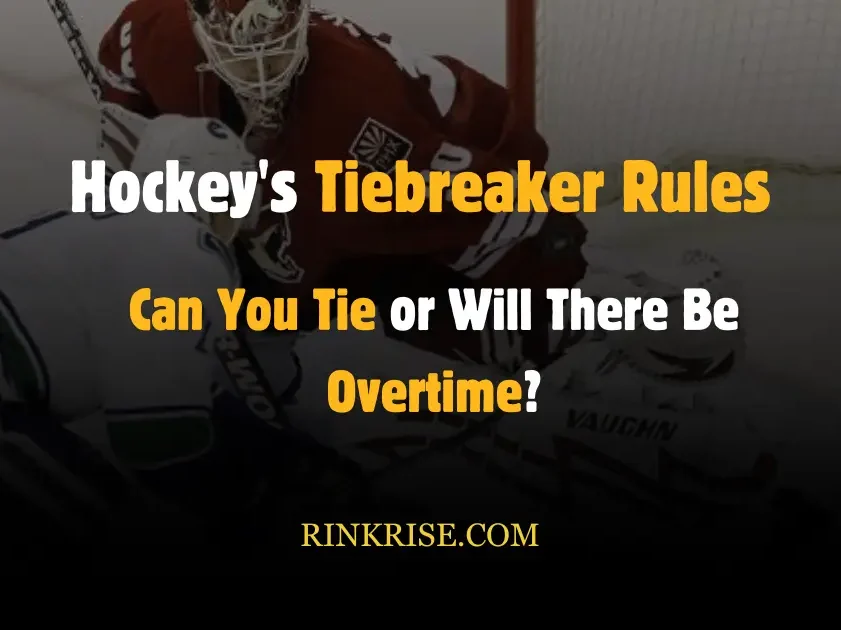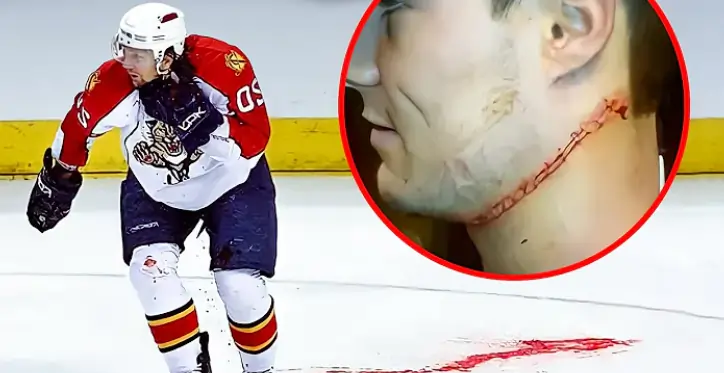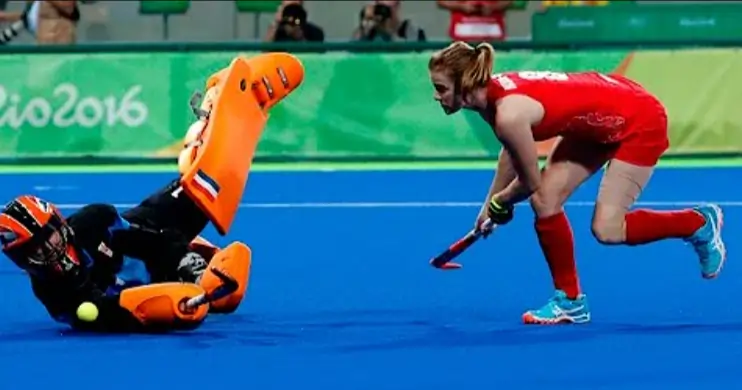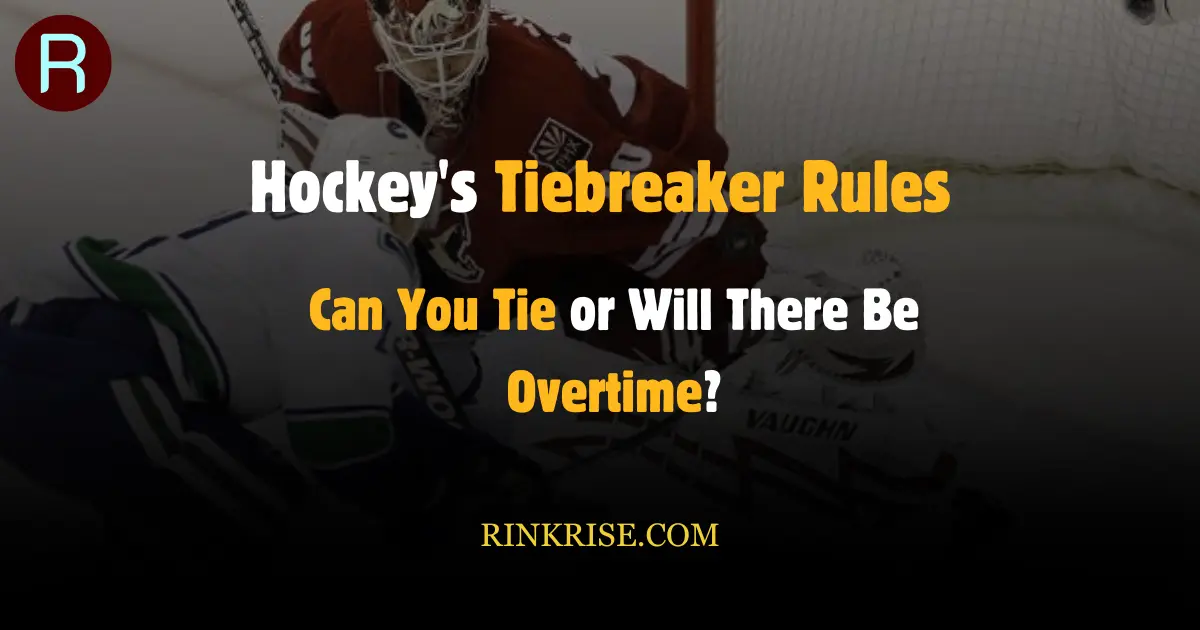Hockey’s Tiebreaker Rules
This article explains the rules that apply when a hockey game ends in a tie. It covers everything from the excitement of overtime and the thrill of shootouts, to how these methods help move from a tied game to a clear victory. The piece highlights the tiebreaker methods used in hockey, underscoring their importance in such a competitive sport.

In hockey, a match can indeed conclude with both teams having scored an equal number of goals by the end of the regular playtime. However, rules like overtime and shootouts are typically used to decide a winner, enhancing the game’s excitement and intensity.
Key Rules for Hockey’s Tiebreaker Rules
- Overtime: When hockey teams are evenly matched at the end of regular play, they proceed to an additional period known as overtime. The game ends when one team scores, making them the winners.
- Shootout: If overtime doesn’t produce a winner, the game moves to a shootout. Players take alternating shots at the opponent’s goalie to determine the winner.
Overtime
In hockey, if the game is tied after normal play, teams proceed to an extra period called overtime. During this time, they compete to score the decisive goal. The focus is on maintaining a strong defense while looking for opportunities to attack, as a single successful move can determine the game’s outcome.
Overtime Duration in Hockey
Overtime periods in hockey depend on the league and particular game regulations. Normally, leagues such as the NHL feature a single overtime session that lasts for five minutes of sudden-death gameplay. If the tie persists after this overtime, the match advances to a shootout to identify a winner. Notably, during crucial matches like playoffs or finals, the game may extend into multiple overtime periods until a team scores, determining the victor.
Duration and Resolution of Overtime in Ice Hockey
Overtime in Ice Hockey: Typically, an ice hockey game features a single overtime period, which is five minutes of sudden-death gameplay. If the score is still tied after this, the match advances to a shootout to establish a winner.
Multiple Overtimes: In critical scenarios, like playoffs or championship matches, overtime can extend into multiple periods. The game continues with these additional overtimes until a team scores, thus determining the victor.
Extended Overtime Rules in Hockey
After two overtime periods in hockey, if there’s still no winner, the game extends into more overtime periods. Each period is a five-minute sudden-death session, especially in professional leagues such as the NHL. The teams play continuously until one team scores, which immediately concludes the match.
Overtime Continuation
In the unusual event that a hockey game extends to eight overtime periods without a winner, the match would persist under the same conditions. The teams play sudden-death overtimes, where the first to score wins, and this continues until a decisive goal is made.

Goalie Strategy in Overtime
Teams are allowed to remove their goalie during overtime to add an extra attacker, aiming to boost their scoring potential. This tactic is risky since it exposes the goal to potential counterattacks from the opposition. Teams might opt to pull their goalie if they are behind and need a goal to tie or if they assess that the strategic advantages surpass the dangers involved.
Overtime Rules in NHL Games
Overtime in regular-season NHL games consists of a single five-minute, sudden-death period. If the game is still tied after this, the outcome is decided by a shootout.
In contrast, NHL playoff games allow for multiple overtime periods. A winner must be declared in these matches, so they continue without shootouts until one team scores.
2.Shootouts
Shootouts serve as the ultimate tiebreaker when overtime fails to determine a winner. This critical phase features a one-on-one contest where shooters aim to outsmart the goalie to secure victory for their team.
Duration and Format of NHL Shootouts
Typically, a hockey shootout involves three rounds. Each team chooses three players to take penalty shots. If tied after these rounds, the shootout shifts to a sudden-death format, continuing until one team succeeds while the other fails.
Resolution of Tied Shootouts
Should the shootout remain tied after multiple sudden-death rounds, the match is officially recorded as a tie. Some events may adopt additional rounds or alternative tiebreaking methods to declare a winner.

Selection Criteria for Shootout Participants
Players are chosen for shootouts based on their skill, past performance, and psychological readiness, as assessed by the team’s coaching staff. The aim is to select individuals who excel in precision and puck control.
Rules for Conducting a Hockey Shootout
In a shootout, teams alternate penalty shots. The team with more goals after the set rounds claims the extra point. If still unresolved, the sudden-death rounds continue until a decisive goal is scored. If no winner emerges, the game concludes as a tie.
Decisive Measures in Hockey
- Tiebreaker Regulations: To maintain high levels of excitement and engagement, hockey incorporates tiebreaker rules that favor decisive game outcomes.
- Reducing Draws: Historically, the rules in hockey have evolved to decrease the occurrence of ties, ensuring there is a definitive winner for each match.
- Enhancing Excitement: Eliminating ties keeps the suspense high in hockey, ensuring fans remain captivated until a team scores the winning goal.
1.Tiebreaker
Hockey leagues use tiebreaker rules to eliminate draws and guarantee clear outcomes. These rules emphasize aggressive play, pushing teams to strive for goals to prevent a stalemate, thus maintaining high engagement and intensity throughout the match.
Execution of Tiebreakers in Hockey
When a hockey game concludes in a tie after the standard playtime, it generally moves into overtime or a shootout to establish a definitive winner.
Resolution of Tied Ice Hockey Matches
In the event of a tie in ice hockey following regulation time, the teams typically engage in additional overtime periods or a shootout to decide the victor.
Tie Resolution in Field Hockey
Should a field hockey match end in a tie, the next steps—whether it concludes as a tie or extends to overtime or a shootout—depend on the specific competition rules.
2. Reducing Ties in Hockey
Hockey leagues around the world have progressively adjusted their rules to decrease the occurrence of ties. This change aims to create more dynamic and action-filled games, ensuring clear outcomes. The elimination of ties boosts the excitement and competitiveness, thereby increasing fan engagement and overall enjoyment of the sport.
3. Excitement:
The elimination of ties significantly enhances the excitement in hockey matches. Players are motivated to perform passionately as each moment could lead to a win, while fans watch intently for that pivotal play. This constant anticipation of a decisive action keeps the audience engaged and contributes to the sport’s lasting appeal.
Read also: Can You Tie in A Hockey Game End?
Concluding Insights on Hockey Excitement
Hockey matches, renowned for their intensity and excitement, become particularly thrilling when they end in ties. Teams engage in fierce competition during overtime or shootouts to clinch a win, captivating fans globally. Thanks to tiebreaker rules that promote decisive results, the suspense of sudden-death goals and crucial shootout saves keeps viewers riveted. Each tied game has the potential to unfold into unforgettable, adrenaline-fueled moments, making every match a memorable experience.
FAQ’s: Hockey’s Tiebreaker Rules
Does hockey go into overtime if tied?
Yes, if a hockey game is tied after regulation, it proceeds to overtime. NHL playoff overtime rules stipulate that if a playoff game remains tied after three periods, a 20-minute overtime is played at five-on-five, continuing until a goal is scored.
Has a hockey game ever ended in a tie?
Yes, ties were common in hockey until 2005 when the NHL implemented the shootout rule after overtime. Now, games either resolve through shootout rounds in the regular season or continue with sudden-death overtime in the postseason until a winner emerges.
What happens in hockey if it’s a tie?
In hockey, if a regular-season game is tied at the end of regulation, it progresses to a five-minute sudden-death overtime. If the tie persists after overtime, the game moves to a shootout to determine the winner.
What happens if Game 7 is a tie in the NHL?
In the NHL, if Game 7 is tied after three periods, teams take a 15-minute break while the ice is resurfaced. They then play 20-minute overtime periods, continuing until a team scores, with five-on-five play, except when penalties occur.
What happens if teams remain tied after an overtime period?
If the score is still tied following an overtime period, or if the second team’s possession hasn’t concluded, additional overtime periods will occur. The game will persist through as many overtimes as necessary to establish a winner.
How do tiebreakers work in hockey?
In hockey, if teams complete their 82-game schedule with identical points, the primary tiebreaker is regulation wins (RW)—all victories earned before overtime or shootouts. If teams remain tied, the next criterion is regulation and overtime wins (ROW), which excludes only shootout wins.
What is the tie-breaker formula?
The tie-breaking formula determines standings when two teams are tied. Initially, the team with more wins is ranked higher. If still tied, the formula combines the goals scored and goals allowed, then divides the goals scored by this total. The team with the higher percentage gains the higher position.



